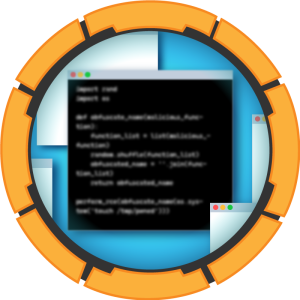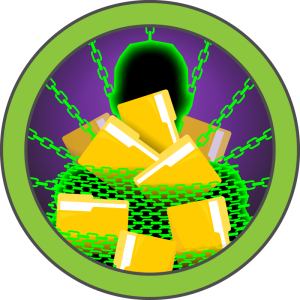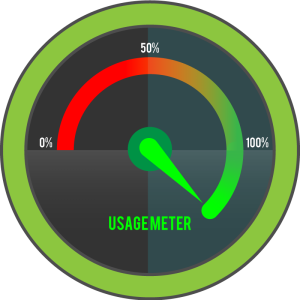
Administrator
`Administrator` is a medium-difficulty Windows machine designed around a complete domain compromise scenario, where credentials for a low-privileged user are provided. To gain access to the `michael` account, ACLs (Access Control Lists) over privileged objects are enumerated, leading us to discover that the user `olivia` has `GenericAll` permissions over `michael`, allowing us to reset his password. With access as `michael`, it is revealed that he can force a password change on the user `benjamin`, whose password is reset. This grants access to `FTP` where a `backup.psafe3` file is discovered, cracked, and reveals credentials for several users. These credentials are sprayed across the domain, revealing valid credentials for the user `emily`. Further enumeration shows that `emily` has `GenericWrite` permissions over the user `ethan`, allowing us to perform a targeted Kerberoasting attack. The recovered hash is cracked and reveals valid credentials for `ethan`, who is found to have `DCSync` rights ultimately allowing retrieval of the `Administrator` account hash and full domain compromise.
1 min read
Alert
Alert is an easy-difficulty Linux machine with a website to upload, view, and share markdown files. The site is vulnerable to cross-site scripting (XSS), which is exploited to access an internal page vulnerable to Arbitrary File Read and leveraged to gain access to a password hash. The hash is then cracked to reveal the credentials leveraged to gain `SSH` access to the target. Enumeration of processes running on the system shows a `PHP` file that is being executed regularly, which has excessive privileges for the management group our user is a member of and allows us to overwrite the file for code execution as root.
1 min read
Analytics
Analytics is an easy difficulty Linux machine with exposed HTTP and SSH services. Enumeration of the website reveals a `Metabase` instance, which is vulnerable to Pre-Authentication Remote Code Execution (`[CVE-2023-38646](https://nvd.nist.gov/vuln/detail/CVE-2023-38646)`), which is leveraged to gain a foothold inside a Docker container. Enumerating the Docker container we see that the environment variables set contain credentials that can be used to SSH into the host. Post-exploitation enumeration reveals that the kernel version that is running on the host is vulnerable to `GameOverlay`, which is leveraged to obtain root privileges.
1 min read
Blue
Blue, while possibly the most simple machine on Hack The Box, demonstrates the severity of the EternalBlue exploit, which has been used in multiple large-scale ransomware and crypto-mining attacks since it was leaked publicly.
1 min read
Blurry
Blurry is a medium-difficulty Linux machine that features DevOps-related vectors surrounding machine learning. The foothold is comprised of a series of CVEs recently disclosed about the ClearML suite. The service provides a web platform, a fileserver, and an API; all of which contain vulnerabilities (`[CVE-2024-24590](https://nvd.nist.gov/vuln/detail/CVE-2024-24590)` - `[CVE-2024-24595](https://nvd.nist.gov/vuln/detail/CVE-2024-24595)`) that can be chained together for remote code execution. Once a shell on the target is obtained, a program that can be run with `sudo` is discovered. The program loads arbitrary `PyTorch` models to evaluate them against a protected dataset. While it is known that such models are susceptible to insecure deserialisation, `fickling` is used to scan the dataset for insecure `pickle` files , prior to loading the model. Malicious code can be injected into a model, using `runpy` to bypass the `fickling` checks.
1 min read
Boardlight
BoardLight is an easy difficulty Linux machine that features a `Dolibarr` instance vulnerable to [CVE-2023-30253](https://nvd.nist.gov/vuln/detail/CVE-2023-30253). This vulnerability is leveraged to gain access as `www-data`. After enumerating and dumping the web configuration file contents, plaintext credentials lead to `SSH` access to the machine. Enumerating the system, a `SUID` binary related to `enlightenment` is identified which is vulnerable to privilege escalation via [CVE-2022-37706]( https://nvd.nist.gov/vuln/detail/CVE-2022-37706) and can be abused to leverage a root shell.
1 min read
Cap
Cap is an easy difficulty Linux machine running an HTTP server that performs administrative functions including performing network captures. Improper controls result in Insecure Direct Object Reference (IDOR) giving access to another user's capture. The capture contains plaintext credentials and can be used to gain foothold. A Linux capability is then leveraged to escalate to root.
1 min read
Certified
`Certified` is a medium-difficulty Windows machine designed around an assumed breach scenario, where credentials for a low-privileged user are provided. To gain access to the `management_svc` account, ACLs (Access Control Lists) over privileged objects are enumerated leading us to discover that `judith.mader` which has the `write owner` ACL over `management` group, management group has `GenericWrite` over the `management_svc` account where we can finally authenticate to the target using `WinRM` obtaining the user flag. Exploitation of the Active Directory Certificate Service (ADCS) is required to get access to the `Administrator` account by abusing shadow credentials and `ESC9`.
1 min read
Cicada
Cicada is an easy-difficult Windows machine that focuses on beginner Active Directory enumeration and exploitation. In this machine, players will enumerate the domain, identify users, navigate shares, uncover plaintext passwords stored in files, execute a password spray, and use the `SeBackupPrivilege` to achieve full system compromise.
1 min read
Crafty
Crafty is an easy-difficulty Windows machine featuring the exploitation of a `Minecraft` server. Enumerating the version of the server reveals that it is vulnerable to pre-authentication Remote Code Execution (RCE), by abusing `Log4j Injection`. After obtaining a reverse shell on the target, enumerating the filesystem reveals that the administrator composed a Java-based `Minecraft` plugin, which when reverse engineered reveals `rcon` credentials. Those credentials are leveraged with the `RunAs` utility to gain Administrative access, compromising the system.
1 min read
Dog
Dog is an easy-rated Linux machine that involves reading sensitive information through an exposed git repository and exposing credentials to get administrator access to `BackdropCMS`. The admin privileges allow an attacker to exploit Remote Code Execution by uploading a malicious archive containing a `PHP` backdoor to gain an initial foothold. The `johncusack` user account also reuses the `BackdropCMS` password. After compromising the `johncusack` account, the attacker finds that the user can run the `bee` executable with `sudo` privileges, which allows the attacker to gain root privileges.
1 min read
Editorial
`Editorial` is an easy difficulty Linux machine that features a publishing web application vulnerable to `Server-Side Request Forgery (SSRF)`. This vulnerability is leveraged to gain access to an internal running API, which is then leveraged to obtain credentials that lead to `SSH` access to the machine. Enumerating the system further reveals a Git repository that is leveraged to reveal credentials for a new user. The `root` user can be obtained by exploiting [CVE-2022-24439](https://nvd.nist.gov/vuln/detail/CVE-2022-24439) and the sudo configuration.
1 min read
EscapeTwo
`EscapeTwo` is an easy difficulty Windows machine designed around a complete domain compromise scenario, where credentials for a low-privileged user are provided. We leverage these credentials to access a file share containing a corrupted Excel document. By modifying its byte structure, we extract credentials. These are then sprayed across the domain, revealing valid credentials for a user with access to `MSSQL`, granting us initial access. System enumeration reveals `SQL` credentials, which are sprayed to obtain `WinRM` access. Further domain analysis shows the user has write owner rights over an account managing `ADCS`. This is used to enumerate `ADCS`, revealing a misconfiguration in `Active Directory Certificate Services`. Exploiting this misconfiguration allows us to retrieve the `Administrator` account hash, ultimately leading to complete domain compromise.
1 min read
Fluffy
`Fluffy` is an easy-difficulty Windows machine designed around an assumed breach scenario, where credentials for a low-privileged user are provided. By exploiting [CVE-2025-24071](https://nvd.nist.gov/vuln/detail/CVE-2025-24071), the credentials of another low-privileged user can be obtained. Further enumeration reveals the existence of ACLs over the `winrm_svc` and `ca_svc` accounts. `WinRM` can then be used to log in to the target using the `winrc_svc` account. Exploitation of an Active Directory Certificate service (`ESC16`) using the `ca_svc` account is required to obtain access to the `Administrator` account.
1 min read
GreenHorn
GreenHorn is an easy difficulty machine that takes advantage of an exploit in Pluck to achieve Remote Code Execution and then demonstrates the dangers of pixelated credentials. The machine also showcases that we must be careful when sharing open-source configurations to ensure that we do not reveal files containing passwords or other information that should be kept confidential.
1 min read
Headless
Headless is an easy-difficulty Linux machine that features a `Python Werkzeug` server hosting a website. The website has a customer support form, which is found to be vulnerable to blind Cross-Site Scripting (XSS) via the `User-Agent` header. This vulnerability is leveraged to steal an admin cookie, which is then used to access the administrator dashboard. The page is vulnerable to command injection, leading to a reverse shell on the box. Enumerating the user’s mail reveals a script that does not use absolute paths, which is leveraged to get a shell as root.
1 min read
IClean
IClean is a medium-difficulty Linux machine featuring a website for a cleaning services company. The website contains a form where users can request a quote, which is found to be vulnerable to Cross-Site Scripting (XSS). This vulnerability is exploited to steal an admin cookie, which is then used to access the administrator dashboard. The page is vulnerable to Server-Side Template Injection (SSTI), allowing us to obtain a reverse shell on the box. Enumeration reveals database credentials, which are leveraged to gain access to the database, leading to the discovery of a user hash. Cracking this hash provides `SSH` access to the machine. The user’s mail mentions working with PDFs. By examining the `sudo` configuration, it is found that the user can run `qpdf` as `root`. This is leveraged to attach the `root` private key to a PDF, which is then used to gain privileged access to the machine.
1 min read
Jerry
Jerry is an easy-difficulty Windows machine that showcases how to exploit Apache Tomcat, leading to an `NT Authority SYSTEM` shell, thus fully compromising the target.
1 min read
Lame
Lame is an easy Linux machine, requiring only one exploit to obtain root access. It was the first machine published on Hack The Box and was often the first machine for new users prior to its retirement.
1 min read
LinkVortex
LinkVortex is an easy-difficulty Linux machine with various ways to leverage symbolic link files (symlinks). The initial foothold involves discovering an exposed `.git` directory that can be dumped to retrieve credentials. These credentials allow access to the Ghost content management system vulnerable to [CVE-2023-40028](https://nvd.nist.gov/vuln/detail/CVE-2023-40028). This vulnerability allows authenticated users to upload symlinks, enabling arbitrary file read within the Ghost container. The exposed credentials in the Ghost configuration file can then be leveraged to gain a shell as the user on the host system. Finally, the user can execute a script with sudo permissions that are vulnerable to a symlink race condition attack (TOCTOU). This presents an opportunity to escalate privileges by creating links to sensitive files on the system and ultimately gaining root access.
1 min read
Mailing
Mailing is an easy Windows machine that runs `hMailServer` and hosts a website vulnerable to `Path Traversal`. This vulnerability can be exploited to access the `hMailServer` configuration file, revealing the Administrator password hash. Cracking this hash provides the Administrator password for the email account. We leverage [CVE-2024-21413](https://cve.mitre.org/cgi-bin/cvename.cgi?name=CVE-2024-21413) in the Windows Mail application on the remote host to capture the NTLM hash for user `maya`. We can then crack this hash to obtain the password and log in as user `maya` via WinRM. For privilege escalation, we exploit [CVE-2023-2255](https://cve.mitre.org/cgi-bin/cvename.cgi?name=CVE-2023-2255) in `LibreOffice`.
1 min read
MetaTwo
MetaTwo is an easy Linux machine that features a website running Wordpress, which is using a plugin vulnerable to unauthenticated SQL injection ([CVE-2022-0739](https://cve.mitre.org/cgi-bin/cvename.cgi?name=CVE-2022-0739)). It can be exploited to reveal the password hash of the Wordpress users which can be cracked to obtain the password for the Wordpress user `manager`. The Wordpress version in use is vulnerable to an XXE Vulnerability in the Media Library ([CVE-2021-29447](https://blog.wpsec.com/wordpress-xxe-in-media-library-cve-2021-29447/)), which can be exploited to obtain credentials for the FTP server. A file on the FTP server reveals the SSH credentials for user `jnelson`. For privilege escalation, the `passpie` utility on the remote host can be exploited to obtain the password for the `root` user.
1 min read
Perfection
Perfection is an easy Linux machine that features a web application with functionality to calculate student scores. This application is vulnerable to Server-Side Template Injection (SSTI) via regex filter bypass. A foothold can be gained by exploiting the SSTI vulnerability. Enumerating the user reveals they are part of the `sudo` group. Further enumeration uncovers a database with password hashes, and the user's mail reveals a possible password format. Using a mask attack on the hash, the user's password is obtained, which is leveraged to gain `root` access.
1 min read
PermX
`PermX` is an Easy Difficulty Linux machine featuring a learning management system vulnerable to unrestricted file uploads via [CVE-2023-4220](https://nvd.nist.gov/vuln/detail/CVE-2023-4220). This vulnerability is leveraged to gain a foothold on the machine. Enumerating the machine reveals credentials that lead to SSH access. A `sudo` misconfiguration is then exploited to gain a `root` shell.
2 min read
Puppy
Puppy is a Medium Difficulty machine that features a non-default SMB share called `DEV`. With the provided credentials for user `levi.james`, enumeration of the domain is possible. The enumeration reveals that this user has `GenericWrite` privileges over the `Developers` group. After adding Levi to this group, we can access the previously inaccessible `DEV` share. This share contains the backup of a `KeePass` database, which we can download, export the hash of and crack. The database reveals a plethora of username and password combinations. A password spray attack shows that one of the passwords is valid for user `Ant.Edwards`. Furthermore, this new user has `GenericAll` privileges over the user `Adam.Silver`, which allow us to change their password to a password of our choice. After the password is changed, we must re-enable Adam's account, as it has been disabled, which then allows us to connect to the remote system over WinRM. Lateral movement is achieved by finding the backup of a website, which contains credentials for user `Steph.cooper`. Finally, privileges are escalated through `DPAPI` credentials that are decrypted using Steph's password. The credentials revealed belong to `Steph.cooper_adm`, presumably the Administrative account of Steph, and a connection can be made over WinRM.
1 min read
Runner
Runner is a medium difficulty Linux box that contains a vulnerability ([CVE-2023-42793](https://nvd.nist.gov/vuln/detail/CVE-2023-42793)) in `TeamCity`. This vulnerability allows users to bypass authentication and extract an API token, which can be used to enable debug features for executing system commands. By gaining access to a `TeamCity` docker container and compressing the `HSQLDB` database files, we can extract credentials for the user `matthew` and find an `SSH` key for `john`. After cracking the password, we can authenticate on the host filesystem. Upon inspecting the `/etc/hosts` file, we discover a running `Portainer` instance. Using `matthew's` credentials, we access the subdomain externally. While authenticated, we find that we can create images, but our privileges are limited. After checking the version of `runc` on the host, we exploit a vulnerability ([CVE-2024-21626](https://nvd.nist.gov/vuln/detail/CVE-2024-21626)) through the image build function of `Portainer`, which allows us to create a SUID bash file on the host.
1 min read
Signed
A beginner-friendly Windows machine with EternalBlue exploit.
1 min read
Support
Support is an Easy difficulty Windows machine that features an SMB share that allows anonymous authentication. After connecting to the share, an executable file is discovered that is used to query the machine's LDAP server for available users. Through reverse engineering, network analysis or emulation, the password that the binary uses to bind the LDAP server is identified and can be used to make further LDAP queries. A user called `support` is identified in the users list, and the `info` field is found to contain his password, thus allowing for a WinRM connection to the machine. Once on the machine, domain information can be gathered through `SharpHound`, and `BloodHound` reveals that the `Shared Support Accounts` group that the `support` user is a member of, has `GenericAll` privileges on the Domain Controller. A Resource Based Constrained Delegation attack is performed, and a shell as `NT Authority System` is received.
1 min read
UnderPass
Underpass is an Easy Linux machine starting with a default Apache Ubuntu page. This leads the attacker to enumerate the machine's UDP ports for alternative attack vectors. The attacker can enumerate SNMP and discover that `Daloradius` is running on the remote machine, and the operators panel can be accessed using the default credentials. Inside the panel, the password hash for the user `svcMosh` is stored, and it's crackable. Then, the attacker can log in to the remote machine using SSH with the credentials they have obtained. The user `svcMosh` is configured to run `mosdh-server` as `root`, which allows the attacker to connect to the server from their local machine and interact with the remote machine as the `root` user.
1 min read
Usage
Usage is an easy Linux machine that features a blog site vulnerable to SQL injection, which allows the administrator's hashed password to be dumped and cracked. This leads to access to the admin panel, where an outdated `Laravel` module is abused to upload a PHP web shell and obtain remote code execution. On the machine, plaintext credentials stored in a file allow SSH access as another user, who can run a custom binary as `root`. The tool makes an insecure call to `7zip`, which is leveraged to read the `root` user's private SSH key and fully compromise the system.
1 min read
Wifinetictwo
WifineticTwo is a medium-difficulty Linux machine that features OpenPLC running on port 8080, vulnerable to Remote Code Execution through the manual exploitation of `[CVE-2021-31630](https://nvd.nist.gov/vuln/detail/CVE-2021-31630)`. After obtaining an initial foothold on the machine, a WPS attack is performed to acquire the Wi-Fi password for an Access Point (AP). This access allows the attacker to target the router running `OpenWRT` and gain a root shell via its web interface.
1 min read
Dante
A beginner-friendly Windows machine with EternalBlue exploit.
1 min read
Zephyr
Zephyr Server Management have been hired by Painters organisation to actively maintain their infrastructure as they continue to grow as a business. The organisations are mandated to have quarterly penetration tests and have employed you to actively seek any potential vulnerabilities that could lead to both the Painters and Zephyr Server Management networks being fully compromised. You have been assigned the task of testing the internal network and have been given access to a VPN to communicate with the network. You are tasked to explore the corporate environment, pivot across trust boundaries, and ultimately attempt to compromise all Painters and Zephyr Server Management entities.
1 min read
Baby Encryption
Spying time. Check what all users have been up to with this Challenge recently.
1 min read
Baby Interdimensional Internet
aw man, aw geez, my grandpa rick is passed out from all the drinking again, where is a calculator when you need one, aw geez
1 min read
FindTheEasyPass
Find the password (say PASS) and enter the flag in the form HTB{PASS}.
1 min read
hunting
I've hidden the flag very carefully, you'll never manage to find it! Please note that the goal is to find the flag, and not to obtain a shell.
1 min read
Neonify
It's time for a shiny new reveal for the first-ever text neonifier. Come test out our brand new website and make any text glow like a lo-fi neon tube!
1 min read
Photon Lockdown
We've located the adversary's location and must now secure access to their Optical Network Terminal to disable their internet connection. Fortunately, we've obtained a copy of the device's firmware, which is suspected to contain hardcoded credentials. Can you extract the password from it?
1 min read
racecar
Did you know that racecar spelled backwards is racecar? Well, now that you know everything about racing, win this race and get the flag!
1 min read
Weak RSA
Can you decrypt the message and get the flag?
1 min read
xorxorxor
Who needs AES when you have XOR?